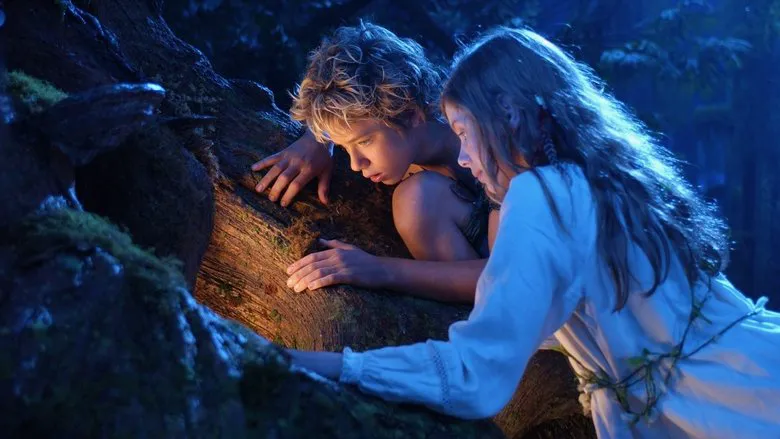The Timeless Allure of Peter Pan: A Boy Who Refused to Grow Up
We’ve all encountered stories that wrestle with the complexities of adulthood and the desire to cling to the innocence of youth. Remember “The Little Prince,” a classic that delicately explores themes of escaping reality? As grown-ups, we might dissect these tales with a more critical lens, questioning if children truly grasp their underlying messages.
But today, let’s journey into a fairy tale that’s disarmingly direct, a pure, unadulterated expression of a child’s inner world: “Peter Pan.” This isn’t a subtle philosophical exploration; it’s a quintessential children’s story. Peter Pan, the boy who wouldn’t grow up, has become a global icon, a symbol of eternal childhood, limitless adventure, and the boundless imagination of youth. He’s so universally recognized that “Peter Pan” itself is a proper noun, cemented in the English lexicon.
A Story Reimagined: Adaptations of a Classic
The magic of “Peter Pan” has captivated audiences for generations, leading to countless adaptations across various mediums. From enchanting stage productions to animated series and blockbuster films, the story has been reimagined time and time again. Notable examples include Steven Spielberg’s imaginative “Hook” (1991), Disney’s enchanting sequel “Return to Never Land” (2002), and Universal Pictures’ visually stunning “Peter Pan” (2003). The story’s longevity has only proven the impact it has had on audiences spanning generations.
To celebrate the enduring legacy the publication of “Peter Pan” holds the British government invested £3 million, commissioning a sequel crafted by 3,000 writers to decide who would execute the story. Geraldine McCaughrean, a highly respected children’s author, was selected to write the official sequel, “Peter Pan in Scarlet.”
The Mastermind Behind the Magic: J.M. Barrie
“Peter Pan” sprang from the creative mind of Scottish novelist and playwright James Matthew Barrie. Originally conceived as a stage play, Barrie later transformed the story into a novel, publishing it as “Peter Pan and Wendy” in 1911. James Matthew Barrie (1860-1937), born in Kirriemuir, Scotland, was a celebrated figure in children’s literature, with “Peter Pan” standing as his most iconic and beloved work.
Barrie’s passion for reading and writing ignited at a young age, leading him to graduate from the University of Edinburgh. In 1928, he was honored with the presidency of the Society of Authors. He dedicated much of his creative energy to crafting stories for children, penning numerous fairy tales and plays. His 1904 play, “Peter Pan, or the Boy Who Wouldn’t Grow Up,” resonated deeply with audiences, achieving phenomenal success, and the subsequent novel adaptation solidified his place in literary history.
Neverland: Where Dreams Take Flight
The heart of “Peter Pan” lies in Neverland, a fantastical realm birthed from Barrie’s boundless imagination. In this enchanted place, Peter Pan possesses the power of flight and remains forever young, while Tinkerbell adds a touch of sparkling magic. The story unfolds with the Darling family.
One fateful night, Peter Pan appears at their window, offering to show Wendy and her brothers, John and Michael, how to soar through the sky and embark on an unforgettable adventure in his magical land of Neverland. The children accept with gusto and quickly learn.
This island is teeming with possibilities – the home of wild beasts, Native American tribes, swashbuckling pirates, playful fairies, and alluring mermaids – everything a child could conjure in their wildest dreams. Free from the constraints of adult supervision, the children build their own, manage their own affairs, engage in playful antics, and confront daring situations under Peter Pan’s fearless lead. Yet, homesickness eventually creeps in, and, prompted by Wendy’s maternal instincts, they bid farewell to Neverland and return home.
While Wendy and her siblings grow up, Peter Pan remains eternally young. Wendy’s time in Neverland grants her insight of her own, exploring ideas of love, family, and the acceptance of adulthood.
The Enduring Legacy of a Boy Who Wouldn’t Grow Up
“Peter Pan” offers a vibrant portrait of childhood, that it is a most beautiful existance, meant to be revered, and never forgotten.
Simultaneously, the narrative reminds us that childhood is transient process of life. Peter Pan is a reminder that we are able to maintain the childlike wonder we all desire even after growing up. The craving for the innocence of childhood is a yearning that can connect to all people far and wide.
Everyone who has engaged in the magic of “Peter Pan” has carried their own Peter Pan within their hearts, but that magic fades by way of growing. Because children begin to age, they begin to forget about fairy tales and other beautiful fantasies of childhood. Because they’ve accepted this inevitability, they no longer seek out the magic. Nevertheless, children will need the magic “Peter Pan” can offer, because within the character contains endless possibility for every generation to come.
Growing up is a journey to be revered; when children are young, share “Peter Pan”, and teach them to store beautiful dreams.